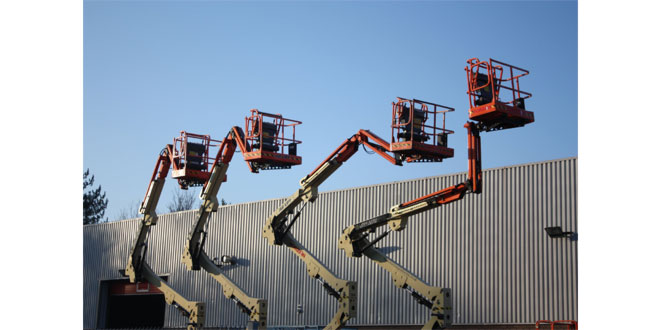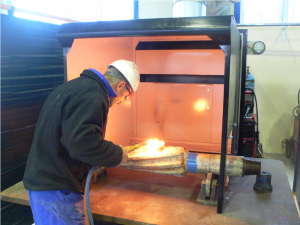
Health and safety is of utmost importance in any workplace, no matter the type of industry. It is the responsibility of the employer and their employees to keep themselves and others safe at all times. Failure to do so can lead to severe consequences. The immediate concern following an accident should focus on a person’s injuries. No one would want to be in a position where their actions have caused harm to another person. In the most serious of situations, an accident may even lead to death. As for the long-term consequences, you and your business can face reputation damage and financial ruin. Punishments for a lapse in health and safety measures often involve fines, disqualification orders and imprisonment.
To anyone working in industries such as material handling and logistics, you should already be well aware of health and safety risks and why it’s essential to go above and beyond. There is a range of serious hazards associated with handling dangerous materials. Laws and regulations are in place to keep workplaces safe from accidents. Even if an accident doesn’t occur, breaking regulations can lead to severe penalties.
In this article, we’re going to be exploring some of the most dangerous materials in working environments and offering tips on how you can keep safe while handling the materials.
There are several different types of hazardous materials that you can encounter in the workplace which may be considered dangerous. Every industry is different and will therefore work with varying materials. Some sectors will have higher levels of risk than others.
One of the most dangerous types of materials that you can handle is acids. Acids can include sulfuric acid, nitric acid and hydrochloric acid. Similarly, chemical products such as cleaning chemicals and disinfectant also pose a risk. Failure to properly handle and store chemicals can cause serious accidents and adverse reactions. Poisonous gas, such as carbon monoxide and chlorine, is another area that can put people at risk if they don’t follow safety procedures.
A hazardous danger is not always visible or an obvious point of concern. It can be dangerous for people to inhale fumes and mists due to how they attack the respiratory system. Sources of fumes can include paint and epoxy sprays. Fumes can also emit while performing welding and soldering tasks. Like fumes, dust can also pose a threat to the respiratory system and the eyes. Dust particles most commonly form when working with wood and stone.
Last, but certainly not least, is equipment. Equipment that you use for work purposes can be dangerous, and most types of equipment are heavily regulated. Lifting heavy goods, for instance, requires specialist equipment. If the equipment breaks or a person operates it incorrectly, a dangerous situation can unfold. There are also advanced machinery that can severely injure someone if something goes wrong.
 Now that you have a better understanding of the different types of dangerous materials present in workplaces, it’s time to look at how you can keep safe by handling them properly. First and foremost, a safety data sheet is an essential piece of documentation. This sheet should be easily accessible by employees to inform them of the risks associated with the materials they’re handling. It’s critical to implement effective safety procedures, and supervisors should be in place to check that employees are following the rules.
Now that you have a better understanding of the different types of dangerous materials present in workplaces, it’s time to look at how you can keep safe by handling them properly. First and foremost, a safety data sheet is an essential piece of documentation. This sheet should be easily accessible by employees to inform them of the risks associated with the materials they’re handling. It’s critical to implement effective safety procedures, and supervisors should be in place to check that employees are following the rules.
Anything considered hazardous should be clearly marked as such, including fragile goods, acids and flammable liquids. Warning symbols are easily recognisable and inform workers of how they should go about their job. When handling objects marked with warnings, you should do so safely and correctly to minimise accident risk. Employees should be cautious and recognise what precautions to take, making sure to adapt to each material and its associated risks. Employees should avoid eating and drinking during the handling process and thoroughly wash and sanitise their hands after doing so.
It’s not just about how you handle dangerous materials but also how you store them in suitable places. Materials should not mix with incompatible classes. For example, chemicals that combine can set off an adverse chain of reactions that endangers life. There should be signs throughout the working environment to advertise safety procedures, such as no smoking in the area.
Personal protective equipment is another vitally important element to keep employees safe from all types of hazards. Exposure can occur via ingestion, skin contact and inhalation, so equipment should minimise all potential avenues. PPE can include gloves, helmets, safety goggles, face screens, earplugs, safety boots and respiratory equipment, to name just a few.
In the UK, workplace safety is regulated through the Health and Safety at Work Act 1974. As part of the law, businesses must follow PUWER (Provision and Use of Work Equipment Regulations 1998), which regulates equipment at work. Many companies, particularly those in the construction and logistic industries, use lifting equipment to carry out their work, which is where LOLER (Lifting Operations and Lifting Equipment Regulations 1998) becomes relevant. LOLER focuses explicitly on the regulation of heavy lifting equipment. The rules ensure that equipment is safe and effective to use and that employees operate them safely. As part of this, equipment must undertake regular LOLER inspections every 6-12 months.
As well as lifting equipment, work environments may also have local exhaust ventilation systems. LEV systems can eliminate contaminants such as fume and dust. While they have their benefits in keeping a workplace safe, they also have their unique risks. Adequate safety procedures should be in place when LEV systems are in operation. As with LOLER, the systems also require thorough examinations every 14 months. A qualified and competent person carries out LEV testing to ensure that the system works well and is up to standard.